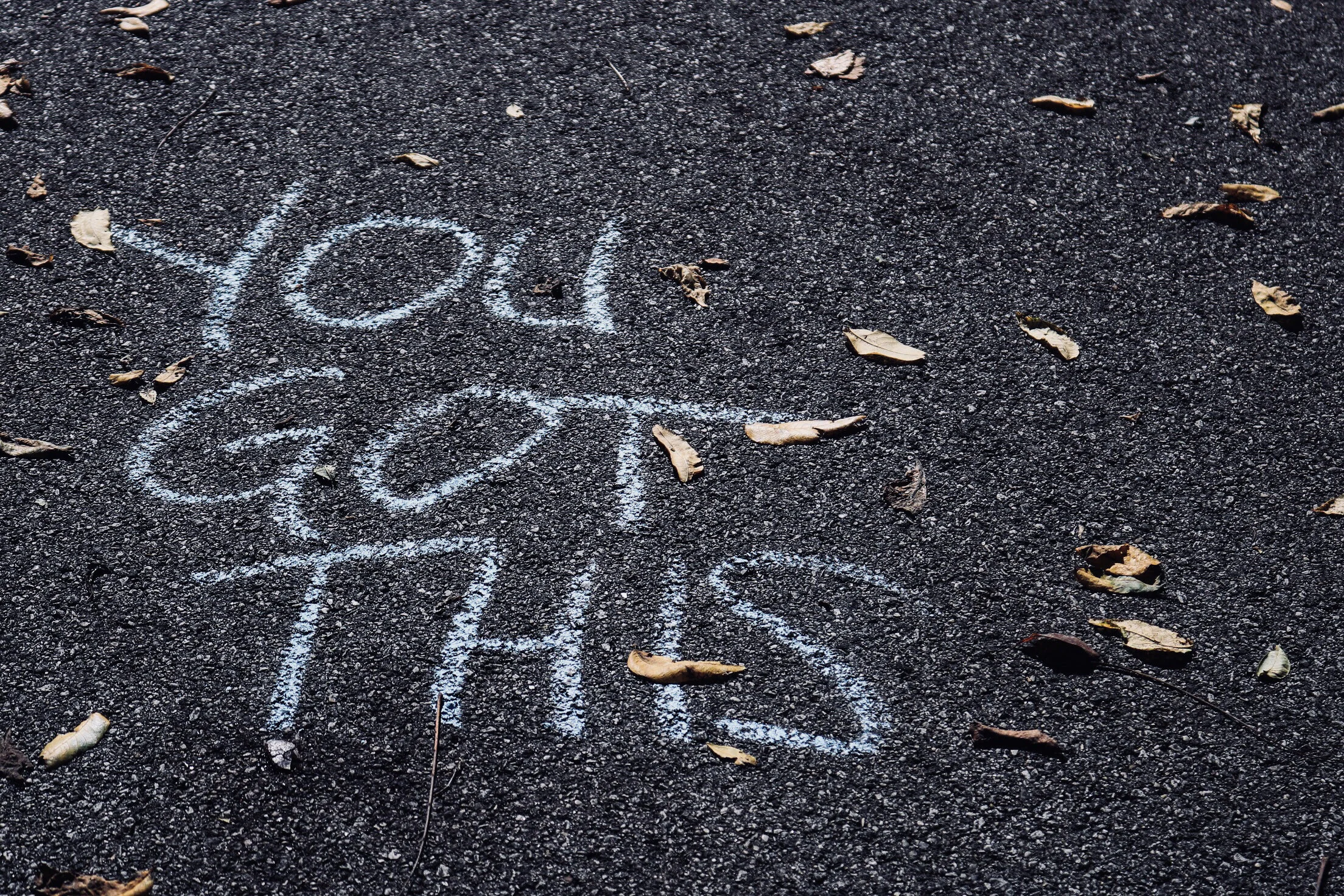Change the Behavior. Change the Outcome.
“What’s for dinner?” A common question that most likely gets asked daily. You pull up in your driveway, come in through the front door, kiss the hubby hello, and then…the proverbial question, “What’s for dinner?” Ughh! It’s five o’clock and you don’t feel like cooking. Another pizza night? Maybe subs from the local grocery store. Or how about Chinese food? Since you started going into the office again eating out has become the new norm. You know eating out isn’t healthy for you, not to mention the exorbitant amounts of money you’re throwing at this new routine. What can be done to minimize the number of times you order out?
I think the obvious answer to this question is don’t order out. Duh! But that is easier said than done. The last thing you want to do after a long day’s work and sitting in traffic is slave over a hot stove and make dinner for the family. All you want to do is kick off your shoes, throw on your favorite sweats, plop on the couch and mindlessly watch whatever is on the television. Is this you being lazy? Could be. But there is a better explanation for this phenomenon. According to the University of British Columbia, people are inherently lazy because that's just how our brains are wired. (CBC.CA, 2018) In fact, science has already proven that our bodies naturally choose the most efficient way to carry out a task so to limit the number of calories we expend. Of course! By ordering out, you are expending less calories, thereby giving you the calories, you need to do your evening workout! However, you really don’t intend to do that evening workout after dinner. Do you? You understand why you make the decisions you do. But do you realize that in the long run those decisions can result in an unfavorable outcome? So, what’s the solution? What can you do to create favorable outcomes? Change the Behavior. Change the Outcome.
The popular and well-known saying used when tackling big goals and huge problems “How do you eat an elephant? One bite at a time.” is something you can apply when trying to formulate a solution or when you start out on a new endeavor. When a problem seems overwhelming or when you are starting a new project, you need to step back, assess the situation, and determine what steps you need to take to either rectify the situation or move forward. Great! You’ve identified the plan! Now what?
Sometimes, when I am excited about tackling a problem or starting a new project, I can’t be bothered with planning. I just want to go! Oh yeah, I know the steps I need to do, but I have not thoughtfully planned everything out. What ends up happening is I try to do all the steps at once. I spend time doing this, then a little of that. While I may be making progress, is it really an efficient use of my time? In the dinner example above, what steps have you identified to rectify this problem? Maybe it is as simple as meal prepping on Sunday. But what does meal prep entail? Where do you even start? Let’s break this down into some basic steps:
Identify what types of food the family likes to eat.
Determine which meal will be eaten on which night.
Create a grocery list.
Make sure you have containers to keep your prepared meals.
Go to the store.
Start cooking.
Once everything is cooled, pack the meals into their respective containers.
Refrigerate the meals.
Take the containers out when it’s time to eat.
Warm up the food and eat.
The steps outlined above are easy to follow. But for someone who is just starting out, these steps can be overwhelming. To create good and lasting habits, it is important to start out simple. Rather than planning out meals for the week, commit to meal prep for one night. In contrast to the list above, here are the steps for the one-night meal prep.
Identify a meal you enjoy cooking.
Create a grocery list of items needed to make this meal.
Go to the store.
Start cooking.
Once the meal has cooled down, refrigerate.
Take the meal out when it’s time to eat.
Warm up the food and eat.
Change does not happen overnight. It takes time. It requires thought, work, and consistency. We start simple because we want to create lasting habits. Humans tend to choose the path that requires the least amount of effort. As such, it is easier to build from one task than to have a list of tasks to complete. Taking this approach empowers you as the likelihood for success is higher. Once this behavior has become a part of your routine, challenge yourself and add another meal to the list. Soon you will be on your way to meal prepping for the week.
Productivity
Do you find yourself doing any of the following behaviors?
A few minutes after you wake up, you check all your social media apps.
When you have a free moment, you pick up your phone to check your social media apps.
Every weekend, you plop yourself in front of the TV, remote in hand. You scroll and scroll and scroll some more until you find something that piques your interest. A few minutes later, you’re scrolling again.
Your phone never leaves your side.
After you have your morning coffee, you check your email. You do this five, six, seven times a day.
You’ve got that favorite game on your phone that you are glued to.
You are continually looking at top videos on YouTube.
As an experiment, track how much time you devote to these activities using a timer app. Each time you do any one of the activities listed above, start the timer, and stop it when you put your phone down. Add all the times up to see how much time you spend on these non-productive activities. If you cannot be bothered to do this, your phone has a setting that allows you to see how much time to expend on each of these activities. I would venture to say that the amount you spend on these activities is staggering! And you say you have no time to devote to that goal or task that you have been meaning to tackle!
What can you do to change this behavior and become productive? As stated earlier, when you want to create a good and lasting habit, you need to start simple. It is unrealistic to say, “I’m never going to look at my social media apps again!” Rather make a commitment to limit your time on your phone. Or make the activity not as accessible. For instance:
If you are at home, there is no need to always have your phone in hand. By leaving it on the hallway table or in your room, you are limiting the accessibility to your phone. Thereby, minimizing the frequency at which you check your social media apps.
If you must check email, do so. But put your phone down once you have prioritized and answered all the items that require your attention. If someone needs your attention right away, instruct them to call you.
If you mindlessly watch TV on the weekends, unplug your TV and remove the batteries from your remote. When you find yourself wanting to watch TV, try going for a walk or reading a book. Leaving the TV unplugged and removing the batteries from the remote creates a barrier to this non-productive activity. Only when you know what you want to watch should you plug your TV back into the socket and put the batteries back into the remote.
Uninstall the social media apps that you spend the most time on. While this is extreme, it does make checking social media difficult.
Exercise and Eat Healthy
New Year’s resolutions often include a goal to lose weight. Two contributing ways to accomplish this is to exercise and eat healthy. Almost four months into the new year… How many of you are still on track to lose weight? According to new research, February 1st is the day people call it quits on their New Year’s resolution. Furthermore, a poll of 2,000 Americans found that it takes just 32 days for the average person to break their resolution. (NYPost, 2020.) That’s astounding! But why do people find it hard to stay on track and make the change? Well, we know that humans are creatures of habit and will always choose the path of least resistance and/or effort. Therefore, making the change to become healthy by losing weight and eating healthy requires too much thought and too much effort. If you are ready to commit to exercising and eating healthy, you must create a plan to succeed. BUT you need to start simple, especially for those individuals who have made commitments like this in the past.
No doubt, you start out strong. Telling yourself, “This time, it will be different!” That week passes. Life happens and suddenly, you find that you don’t have the time or the energy to commit to this goal. You need to set yourself up for success! Make it easy and make it simple.
To start, try this routine:
1. Lay your clothes out the night before.
2. Set your alarm.
3. Get up.
4. Get dressed.
5. Put your shoes on.
That’s it! It’s that simple. You want to start a routine that allows you to be successful. As the days go on, you’ll say to yourself, “I’ve got my shoes on, I might as well <insert an exercise>. If walking is your exercise of choice, commit to walking for only two minutes. If two minutes gets you to the end of your driveway, well that’s where you end up. As we set our New Year’s resolution, we don’t always consider what that goal entails. Going to sleep early. Getting up early. Going to the gym. Deciding what exercises to do, etc. etc. As basic as this might be, it is something that is often overlooked. Therefore, start small. As you master that simple task, add on additional tasks. Keep in mind that the task must be so, stupid simple that you can, without a doubt, succeed.
Your “eat healthy” routine may look something like this:
1. Make a list of your favorite fruits and green vegetables.
2. Head to the store.
3. Pick up the items on your list.
4. Lay the items out on your kitchen counter.
5. Cut up the items.
6. Store them in your freezer.
7. Before you go to bed, place your blender on the kitchen counter.
The prep is done. When you wake up in the morning, all you need to do is take out the cut-up fruits and veggies, throw them into your blender, and blend. Easy peasy. This is the first step to eating healthy. As this routine becomes habit, you can explore other ways to incorporate healthy eating into your diet.
Call to Action
“If you always do what you’ve always done, you’ll always get what you always got.” James P. Lewis
To change the outcome, you must change the behavior. There will be times when you fail, but there will be times when you succeed. Create habits that are good and long lasting. Ensure that your successes are many by setting yourself up for success. Think of that one goal that you have been putting off. Break it down into simple and manageable tasks. Start with one task and add on another only after you have mastered the previous task. Don’t rush it. Be patient. Be consistent. Be kind to yourself when you have a setback. Most importantly, be true to yourself and never stop trying.
Let me know if this is something that you can incorporate into your daily routine. You got this!
Much Love. ~imee





